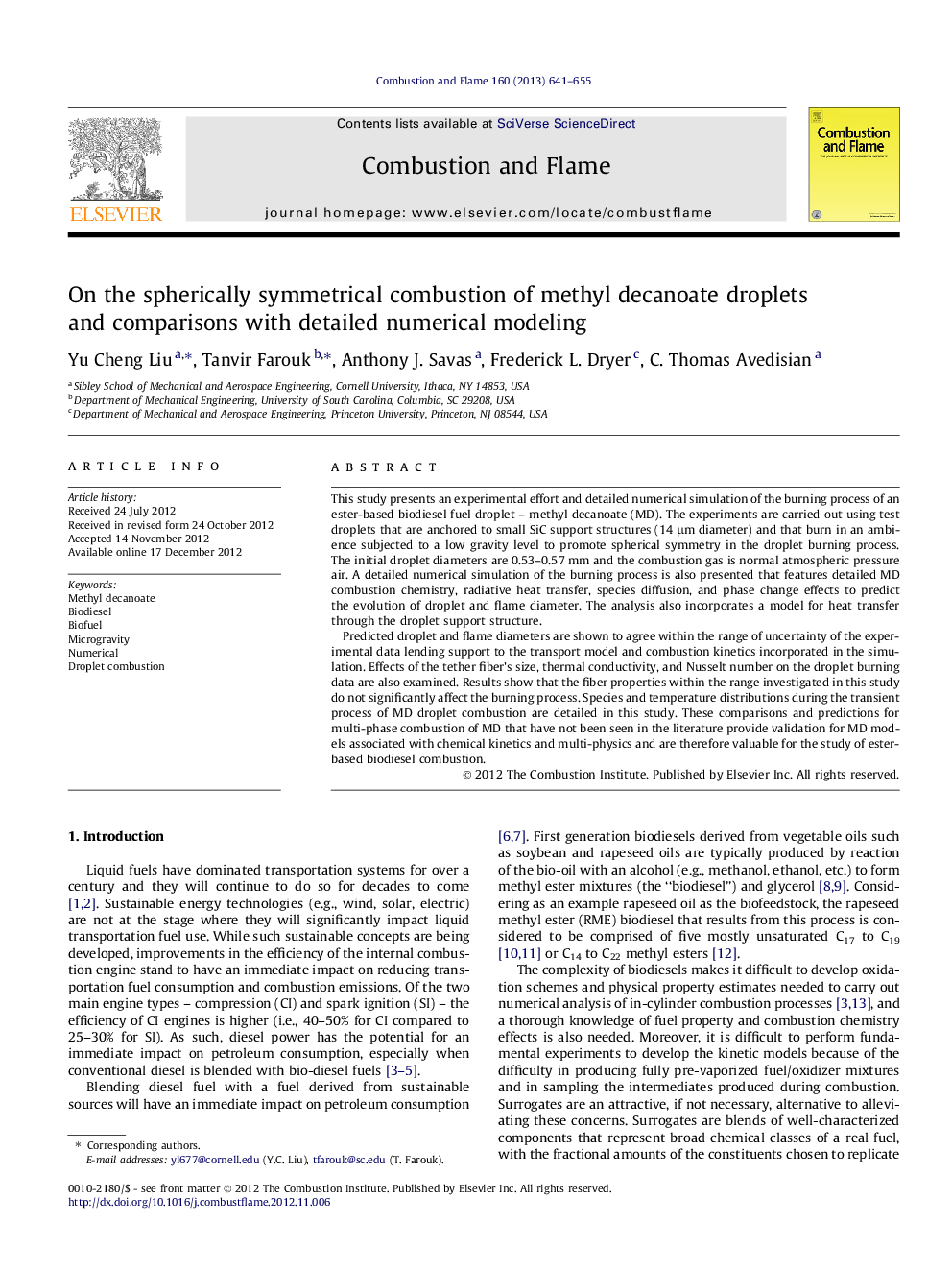| Article ID | Journal | Published Year | Pages | File Type |
|---|---|---|---|---|
| 167031 | Combustion and Flame | 2013 | 15 Pages |
This study presents an experimental effort and detailed numerical simulation of the burning process of an ester-based biodiesel fuel droplet – methyl decanoate (MD). The experiments are carried out using test droplets that are anchored to small SiC support structures (14 μm diameter) and that burn in an ambience subjected to a low gravity level to promote spherical symmetry in the droplet burning process. The initial droplet diameters are 0.53–0.57 mm and the combustion gas is normal atmospheric pressure air. A detailed numerical simulation of the burning process is also presented that features detailed MD combustion chemistry, radiative heat transfer, species diffusion, and phase change effects to predict the evolution of droplet and flame diameter. The analysis also incorporates a model for heat transfer through the droplet support structure.Predicted droplet and flame diameters are shown to agree within the range of uncertainty of the experimental data lending support to the transport model and combustion kinetics incorporated in the simulation. Effects of the tether fiber’s size, thermal conductivity, and Nusselt number on the droplet burning data are also examined. Results show that the fiber properties within the range investigated in this study do not significantly affect the burning process. Species and temperature distributions during the transient process of MD droplet combustion are detailed in this study. These comparisons and predictions for multi-phase combustion of MD that have not been seen in the literature provide validation for MD models associated with chemical kinetics and multi-physics and are therefore valuable for the study of ester-based biodiesel combustion.
